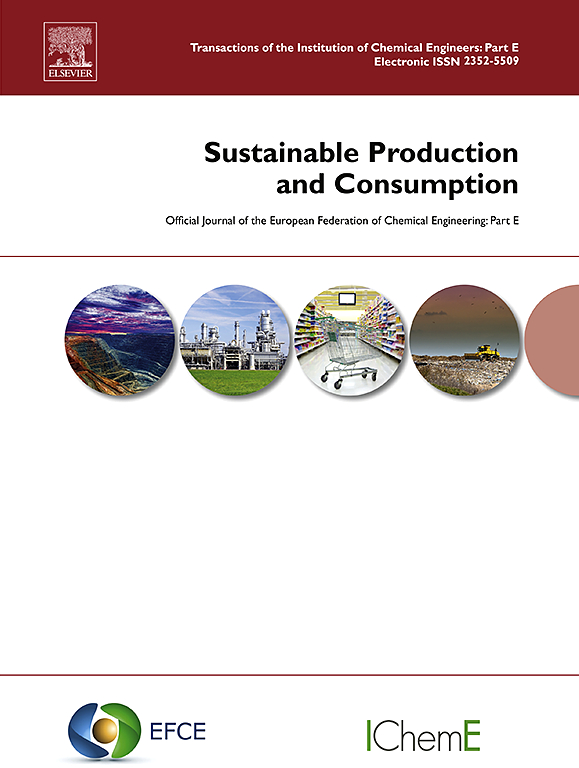Life cycle assessment of agricultural systems toward circularity
IF 9.6
1区 环境科学与生态学
Q1 ENVIRONMENTAL STUDIES
引用次数: 0
Abstract
Agricultural systems contribute significantly to environmental degradation and health impacts due to conventional practices such as postharvest open burning and the widespread use of chemical fertilizers. This study evaluates the potential for circular agricultural practices to mitigate these impacts in Thailand by repurposing agricultural residues for fertilizer, animal feed, and electricity. Utilizing a Life Cycle Assessment (LCA) methodology, the environmental and economic outcomes of conventional versus circular agricultural practices were quantified, focusing on key Area of Protection (AoP) including disability-adjusted life years (DALY), ecosystem damage (species.yr), and resource depletion (USD2013). The results demonstrate that conventional sugarcane and rice cultivation lead to substantial health impacts (up to 2910 DALY), significant ecosystem damage (up to 4.45 species.yr), and resource depletion costs of up to 14.9 million USD2013. In contrast, cassava cultivation, with its existing circular practices, shows comparatively lower impacts, including 415 DALY, 1.47 species.yr of ecosystem damage, and 10.4 million USD2013 of resource depletion. Circular agricultural scenarios, using crop residues to produce organic fertilizers and animal feed, proved highly effective in reducing these burdens. Circular organic fertilizers reduced total costs by 57 %, while converting residues into animal feed resulted in a net economic benefit of 1.98 billion Thai Baht (THB), representing a 137 % reduction in costs compared to the baseline. The findings highlight the importance of transitioning to circular models, emphasizing the need for policy interventions, improved technology access, and enhanced farmer training to promote circular agricultural practices in Thailand.

面向循环的农业系统生命周期评价
由于采收后露天焚烧和广泛使用化肥等传统做法,农业系统严重加剧了环境退化和健康影响。本研究评估了泰国循环农业实践通过将农业残留物重新用于肥料、动物饲料和电力来减轻这些影响的潜力。利用生命周期评估(LCA)方法,对传统与循环农业实践的环境和经济结果进行了量化,重点关注关键保护区域(AoP),包括残疾调整生命年(DALY)、生态系统破坏(species.yr)和资源枯竭(USD2013)。结果表明,传统的甘蔗和水稻种植对健康造成了重大影响(高达2910 DALY),对生态系统造成了严重破坏(高达4.45个物种/年),2013年的资源消耗成本高达1490万美元。相比之下,木薯种植在现有的循环做法下,其影响相对较小,DALY为415种,1.47种。年的生态系统破坏,以及2013年1040万美元的资源损耗。事实证明,利用作物秸秆生产有机肥料和动物饲料的循环农业方案在减轻这些负担方面非常有效。循环有机肥的总成本降低了57%,而将残留物转化为动物饲料的净经济效益为19.8亿泰铢(THB),与基线相比成本降低了137%。研究结果强调了向循环模式过渡的重要性,强调了政策干预、改善技术获取和加强农民培训的必要性,以促进泰国的循环农业实践。
本文章由计算机程序翻译,如有差异,请以英文原文为准。
求助全文
约1分钟内获得全文
求助全文
来源期刊

Sustainable Production and Consumption
Environmental Science-Environmental Engineering
CiteScore
17.40
自引率
7.40%
发文量
389
审稿时长
13 days
期刊介绍:
Sustainable production and consumption refers to the production and utilization of goods and services in a way that benefits society, is economically viable, and has minimal environmental impact throughout its entire lifespan. Our journal is dedicated to publishing top-notch interdisciplinary research and practical studies in this emerging field. We take a distinctive approach by examining the interplay between technology, consumption patterns, and policy to identify sustainable solutions for both production and consumption systems.
 求助内容:
求助内容: 应助结果提醒方式:
应助结果提醒方式:


